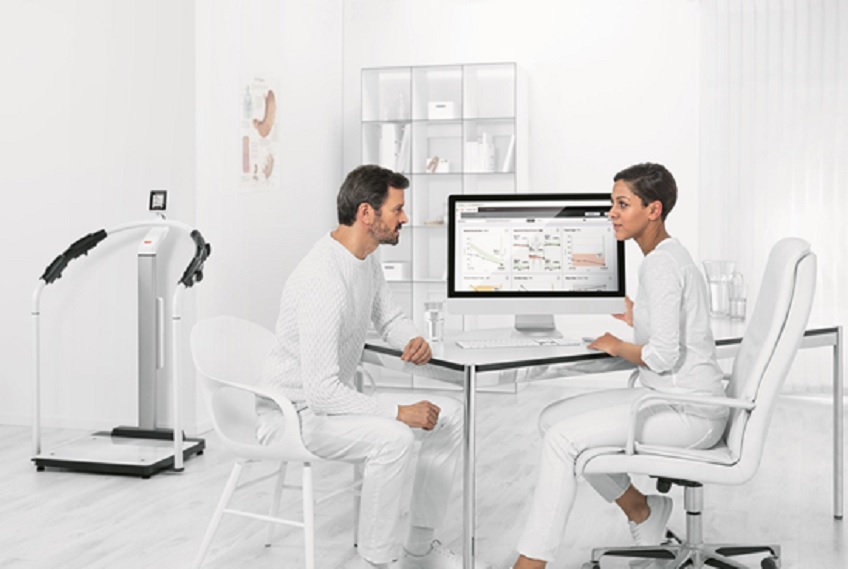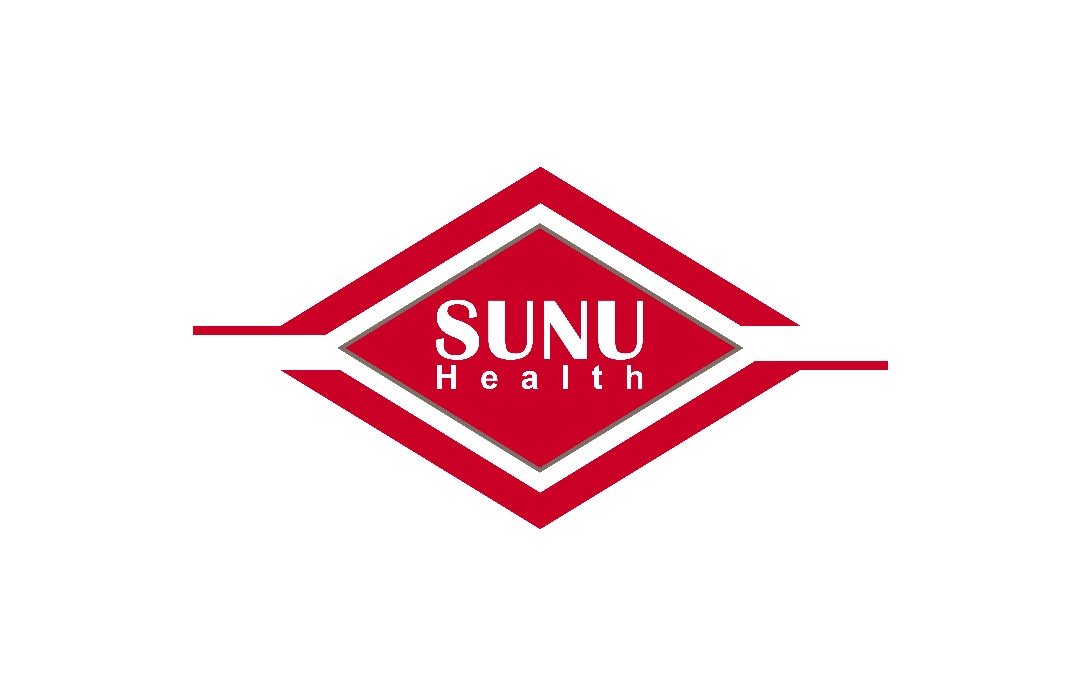Health
8 Types of Software Improving Healthcare Facilities

Technology, in all industries, is continuously evolving. This evolution is especially critical in the healthcare industry, where technological advancements often mean saving more lives and increasing the quality of life for those living with health conditions. The path is wide open for technology and quality healthcare, from surgical robots to new medications and pharmaceuticals.
However, the best tech has to offer in the healthcare industry doesn’t stop at what machines can do, but how they can help human professionals do their job better. For example, administrative systems help physicians provide better care for their patients, limit misdiagnosis, and save time. For those looking for tailored medication services, it might help to search for a ‘specialty pharmacy near me‘ to discover convenient care options aligned with healthcare workflows.
Equipping smaller clinics and facilities that have fewer resources with such technology will take time, but it’s far from impossible. If you own or manage a healthcare office, you can start with software packages or cloud-based software as a service (SaaS) options that focus on efficiency and accuracy, which in effect can raise your bottom line and allow for further development. Today, some of the most common and most affordable healthcare technology includes the following software types.
- EHR and EMR Software
Electronic health records (EHR) and electronic medical record (EMR) software hold your patients’ records digitally and help with better file organization and retrieval. Both software types make it easier to reach a conclusive diagnosis for the patient as the healthcare provider is less likely to miss critical parts in their patient’s medical record. It also makes it easier and faster for doctors to prepare for each appointment they have scheduled in one day.
The difference between the two software systems is that EHR options, such as NextGen EHR software for healthcare, hold the patient’s current information, charts, and diagnosis. EMR, on the other hand, contains a patient’s medical history, often from various healthcare providers. For instance, the EMR for substance abuse developed by Canvas Medical offers a specialized solution tailored for behavioral health and addiction treatment facilities. It enables clinicians to document therapy sessions, manage medication-assisted treatment (MAT), and coordinate care across multidisciplinary teams. The platform’s built-in telehealth and reporting features also help streamline compliance and improve patient engagement in long-term recovery programs.
- Practice Management Software
Practice management (PM) software helps streamline your clinic’s workflow and management. For example, it automates mundane background tasks. It also ensures your clinic runs smoothly by keeping track of staff schedules, approaching patient appointments, and patient cancellations. The software also reduces human error and effort, allowing your staff to be more productive and invest their time caring for your patients instead of filling spreadsheets.
- Medical Billing and Accounting Software
The medical billing cycle is one of the most complex billing processes. It’s also very detail-oriented, making errors rampant and expensive. Medical billing and accounting software help automate and double-check every step of your billing process to reduce the rate of human and system errors.
- CRM Software for Healthcare
Customer relationship manager (CRM) software keeps tabs on your clinic’s patients and their interactions with your staff, their appointment details, feedback, and complaints. Using CRM tools, you can analyze data to identify patterns in patient dissatisfaction. This information should inform your strategy for patient care improvement. The software also ensures you always have the necessary infrastructure, supplies, and human resources to welcome your patients. Additionally, integrating a locum tenens staffing platform can help address sudden staffing shortages and maintain seamless operations. This ensures your clinic has access to qualified professionals ready to step in when needed, enhancing patient care and overall efficiency.
- Online Prescribing Software
Online prescribing software, also known as e-prescribing software, is a program that healthcare providers can use to fill patient prescriptions electronically. HelpCare Plus offers a platform that supports this process, making prescription management more efficient and secure. What makes it superior to using paper-prescriptions is the time it saves doctors from writing every prescription by hand and including the patient’s personal information. It also helps reduce the rate of medication errors due to illegible handwriting or the patient losing their prescription.
- Medical Diagnostic Software
Medical diagnostic software uses complex algorithms to help medical professionals diagnose patients. By inputting the patient’s healthcare record, symptoms, and current medications, the software produces a likely diagnosis almost instantly. Implementing medical diagnostic software in your clinic doesn’t just save you time and shorten patient appointments—more importantly, it reduces the rate of human error in misdiagnosis.
- Imaging and Visualization Software with Artificial Intelligence
Imaging and virtualization software help organize large sets of data into easy to understand graphics. They save your healthcare staff time otherwise spent decoding gigabytes of data and finding correlations and patterns manually. Instead, medically-informed artificial intelligence does all the math and planning for them, providing them with a clean and accurate end-result of the data they can use in patient diagnosis and research.
This software also helps with patient communication, as it’s much easier to get help a patient understand their illness, injury, or condition with the right graphics instead of relying on technical terms alone.
- Virtual Health Software and Devices
More commonly known as telemedicine, virtual healthcare software and devices allow you to provide care for your patients remotely, either from the comfort of their own homes or a different healthcare facility.
With telemedicine, you can save time and resources as you won’t have to welcome patients into your clinic for a full appointment, leaving examination rooms available. It also helps with better patient satisfaction, saving them the trip to your whereabouts while still providing them with adequate care.
Better Tech, Better Care
The benefits of modern technology in the healthcare industry have become indispensable. Nowadays, patients often expect online conveniences like being able to view their records and request prescription refills from a mobile app. To keep pace in this competitive, ever-evolving industry, your practise or clinic needs to lean into new technology.
Health
SUNU Health Named Most Customer Focused HMO of the Year

By Modupe Gbadeyanka
The decision of the management of SUNU Health Nigeria Limited to adopt the strategy of placing the enrollee and customer at the heart of its operations has started to pay off.
The company was recently announced as Most Customer-Focused Health Insurance Company of the Year at the Customer Service Standard Magazine Awards 2025.
The recognition underscored the company’s success in translating its dedication into tangible enrollee satisfaction and superior market service at the Nigerian Health Maintenance Organisation (HMO) landscape.
It also highlights the organisation’s dedicated efforts in streamlining claims processing, enhancing access to quality healthcare providers, and maintaining transparent, responsive communication channels with its diverse client base across Nigeria.
The accolade further serves as a powerful testament to the successful integration of digital solutions and human-centric service models at SUNU Health.
It positions the firm as a leader not only in providing robust health plans but also in delivering the supportive, personalized care that enrollees truly value.
“Clinching the Most Customer-Focused Health Insurance Company of the Year award is not just an honour; it is a validation of the core philosophy that drives every member of the SUNU Health team.
“We believe that healthcare is fundamentally a service industry, and our success is measured by the well-being and satisfaction of our enrollees,” the chief executive of SUNU Health, Mr Patrick Korie, commented.
“This award reinforces our resolve to continuously innovate and set new benchmarks for customer experience in the Nigerian health insurance sector.
“Our commitment to providing accessible, high-quality, and seamless healthcare solutions remains our top priority as we move into the new year (2026),” he added.
Health
Nigeria Launches First National Antimicrobial Resistance Survey

By Adedapo Adesanya
Nigeria has launched its first nationally representative survey on antimicrobial resistance to generate critical data to guide evidence-based policies, improve patient outcomes, and strengthen health system resilience.
Antimicrobial resistance occurs when bacteria, viruses, fungi, and parasites evolve to resist treatment, making infections harder to cure.
As a result, surveillance is essential to track resistance patterns, identify priority pathogens, and guide targeted interventions and with support from the World Health Organization (WHO) and other partners, the initiative marks a milestone in the country’s public health response.
Nigeria becomes the third country globally to partner with WHO on a national antimicrobial resistance survey. having been selected based on the country’s strong commitment to AMR surveillance, its updated WHO Nigeria NAP 2.0, and readiness to expand laboratory and data systems.
Africa’s most populous country ranks 20th globally for age-standardized mortality due to antimicrobial resistance . In 2019, an estimated 263,400 deaths in Nigeria were linked to it—more than the combined deaths from enteric infections, tuberculosis, respiratory infections, maternal and neonatal disorders, neglected tropical diseases, malaria, and cardiovascular diseases.
Globally, resistant infections in tertiary care settings cost between $2,371 and $29,289 per patient episode, extend hospital stays by an average of 7.4 days, and increase mortality risk by 84 per cent.
The survey will see the establishment of a national baseline on antimicrobial resistance prevalence to monitor interventions, assess the distribution, burden (morbidity, mortality, DALYs, cost), and diversity of AMR across regions and populations, as well as contribute to the global target of reducing AMR deaths by 10 per cent by 2030, in line with the political declaration endorsed at the 79th United Nations General Assembly in 2024.
It also seeks to strengthen routine antimicrobial resistance surveillance, including diagnostics, sample referral systems, and laboratory capacity.
Using WHO’s standardized methodology, the survey will run for 12–15 months and cover 40–45 randomly selected health facilities nationwide. Patients with suspected bloodstream infections (BSIs) will be identified using standard case definitions, and blood samples will be analysed in quality-assured laboratories.
Data will be collected across all age groups, covering clinical, demographic, laboratory, financial, and outcome indicators. Follow-up will occur at discharge, 28 days, and three months post-infection. The survey will sample approximately 35,000 patients suspected of BSIs to obtain around 800 isolates of the most common pathogens.
Dr Tochi Okwor, Acting Head, Disease Prevention and Health Promotion, Nigeria Centre for Disease Control and Prevention (NCDC) said, “With WHO’s support, we are confident the survey will generate the evidence needed to protect public health.”
WHO Representative in Nigeria, Dr Pavel Ursu, reaffirmed WHO’s commitment stating that ,“Nigeria is taking a decisive step toward combating AMR with an approach grounded in data, science, and measurable impact. This survey will provide the clarity needed to drive smarter policies, stronger surveillance, and better patient outcomes. Nigeria is laying the foundations for a resilient health system, one that protects lives, strengthens trust, and ensures that essential medicines remain effective for future generations.”
Adding her input, Dr Laetitia Gahimbare, Technical Officer at WHO Regional Office for Africa, added:“Strengthening surveillance enhances Nigeria’s capacity to detect and respond to AMR threats, supporting better patient outcomes, reinforcing health security, and building a resilient system.”
Professor Babatunde Ogunbosi, Paediatric Infectious Diseases Specialist at University College Hospital, Ibadan, highlighted the broader impact:, “This survey is about more than data. It’s about building national capacity for research, diagnostics, and policy. It integrates science into public health decision-making.”
Health
Our Vision Extends Beyond Offering Health Insurance Packages—SUNU Health

By Modupe Gbadeyanka
One of the leading Health Maintenance Organisations (HMOs) in Nigeria, SUNU Health, has said its philosophy is proactive wellness, noting that this was why it recently partnered with The Divine Physician and St. Luke Catholic Chaplaincy Centre for a community health initiative.
The chief executive of the company, Dr Patrick Korie, said, “SUNU Health’s vision extends far beyond merely offering health packages and insurance.”
“We are fundamentally interested in proactive wellness—preventing illness rather than just treating it. This annual exercise is a crucial part of that commitment, and we will continue to champion it for as long as we exist,” he stressed.
The medical practitioner led the company’s annual Health Walk in Lagos on Saturday, November 8, 2025. The event drew hundreds of health enthusiasts, including the Chaplain of the centre, Rev Fr. John Okoria SJ.
His active participation reinforced the spiritual and moral commitment to holistic well-being, proving crucial in mobilizing staff and community members, thereby ensuring the vital wellness message reached a broad and deeply engaged audience.
The health walk covered several major streets in Lagos, starting from Ishaga Road and navigating through Itire Road, Randle Avenue, Akerele, Ogunlana Drive, and Workers Street before concluding back at the starting point. Following the vigorous walk, participants engaged in a session of high-energy aerobics and other outdoor exercises, reinforcing the day’s focus on fitness.
“We are delighted to champion this vital health initiative alongside the Catholic Chaplaincy Centre LUTH/CMUL. The turnout was truly delightful, reflecting the community’s deep desire to embrace wellness.
“Collaborations like this amplify our message and commitment to the Nigerian community,” the Brand and Corporate Communications Lead at SUNU Health, Mr Samuel Olayemi, stated.
-

 Feature/OPED6 years ago
Feature/OPED6 years agoDavos was Different this year
-
Travel/Tourism9 years ago
Lagos Seals Western Lodge Hotel In Ikorodu
-

 Showbiz3 years ago
Showbiz3 years agoEstranged Lover Releases Videos of Empress Njamah Bathing
-

 Banking7 years ago
Banking7 years agoSort Codes of GTBank Branches in Nigeria
-

 Economy3 years ago
Economy3 years agoSubsidy Removal: CNG at N130 Per Litre Cheaper Than Petrol—IPMAN
-

 Banking3 years ago
Banking3 years agoFirst Bank Announces Planned Downtime
-

 Banking3 years ago
Banking3 years agoSort Codes of UBA Branches in Nigeria
-

 Sports3 years ago
Sports3 years agoHighest Paid Nigerian Footballer – How Much Do Nigerian Footballers Earn













